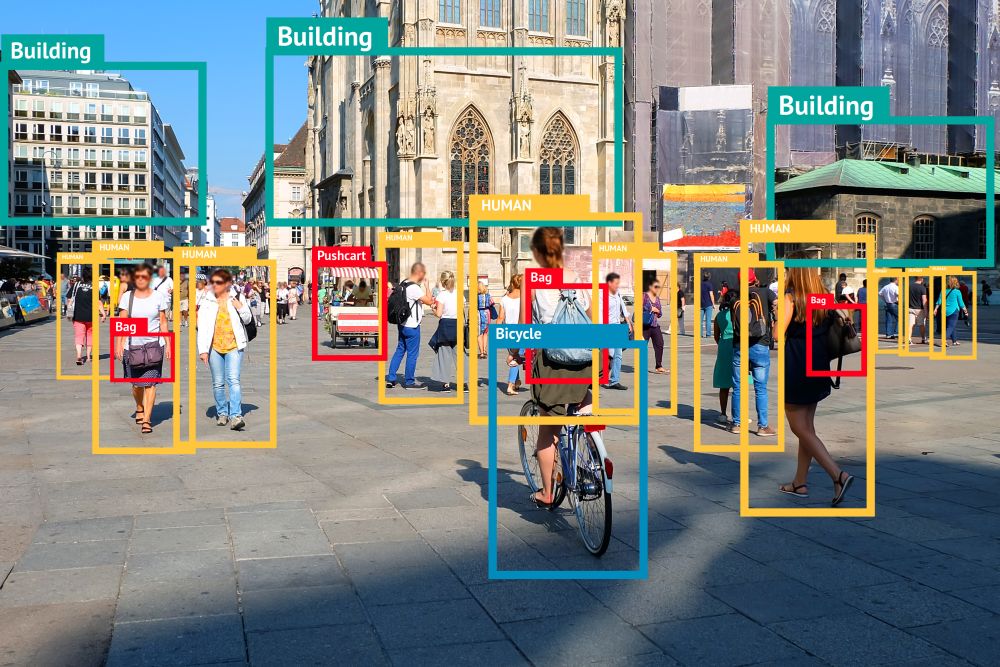Image annotation is an indispensable initial stage in the process of creating machine learning (ML) models for tasks requiring visual information.
To detect, categorise and segment objects, machine learning models must be provided with properly annotated image data. The term mage annotation applies to a group of data labelling practices, encompassing image tagging, labelling and transcribing. These are typically labour-intensive, requiring human intervention to correctly tag images so that they can be identified by machines.
What Does Image Annotation Mean?
In order to be utilised effectively by a machine learning model, an image must be assigned specific digital labels. These digital labels are determined by a systems engineer. They are selected to give the machine learning model very precise knowledge about the picture’s content. During the image labelling process, machine learning systems engineers will also be able to identify key factors affecting the precision of their models. For instance, a system engineer might spot issues with naming or categorisation, etc.
Annotation is generally performed by humans in a time-consuming and labour-intensive process. This process can be greatly facilitated using computer assistance in the form of a digital document annotation tool.
How Images are Annotated
A machine learning systems engineer can add digital labels to an image by applying bounding boxes to the objects of interest within the picture. For example, the machine learning model might need to distinguish between humans and vehicles in a photograph containing both. Bounding boxes can be applied to the relevant elements (people and cars) and thus annotated.
This process is performed for every image in a training set. The amount of time this takes will depend on various factors, particularly on the number of labels required for each image and the number of images that must be labelled.
Complex Image Annotation: Data Platforms
From the outset of an image annotation project, it is necessary to ensure that annotators have the right tools for the annotation tasks at hand and can use them effectively. To perform well as a data annotator, it’s important to be properly trained on the specifications and guidelines for each project. Every business will have its own specific goals and every project will come with its own set of technical requirements.
Once this initial stage has been completed and the annotators are equipped with the knowledge they will require, they can begin data annotation. At this stage, they will be working on sets of images on a data training platform. This is a type of software environment designed to support the various tools that will be necessary for the required digital training exercises.
Any computer vision project must stand or fall on the quality of the image annotation underpinning it. Without accurate and meaningful image annotation, it’s not possible for any computer vision processing to function properly.
Challenges in Image Annotation
There are various challenges and decisions that need to be resolved during an image annotation project. Perhaps the first question that will need to be answered is whether to emphasise the use of human effort or to rely more heavily on computerised tools. While human annotation can be costly and time-consuming, it can often provide more accurate results in the short term. On the other hand, computerised tools can often take a fraction of the time that a human team would require to perform the annotation manually. Much depends on the resources available and the requirements of the project.
Another major challenge is the need for high-quality digital data. Any machine learning model is only as good as the digital data used to train it. Such a model will only produce accurate results if the data quality is sufficiently high. It can be difficult for data labellers to interpret subjective data and produce accurately labelled images for use in an ML model.
Using digital annotation tools can greatly facilitate the data labelling process. That said, these tools must be carefully selected. Considerations include the type of data that will be used and the kinds of annotation required: image annotation, document annotation, the number and type of elements that will need to be labelled, etc. Before embarking on an ML project and choosing a digital document annotation tool platform, it’s important to consider these factors.
Kili Technology is a data-centric AI training solution. Thanks to its innovative data labelling platform, Kili can help AI and machine learning projects to reach the production stage up to ten times more rapidly by facilitating the annotation of all types of unstructured data.
